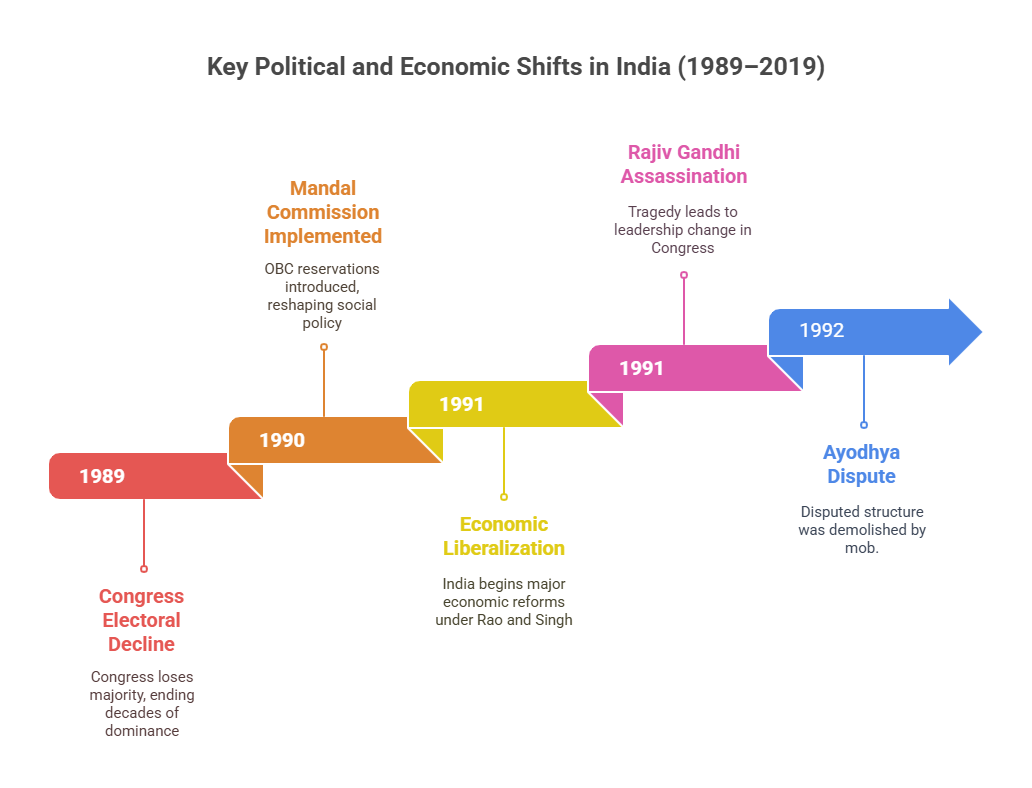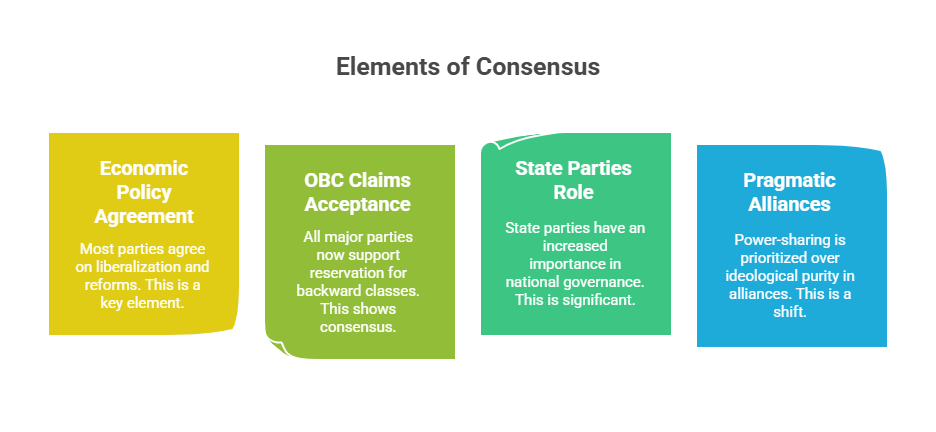
Key Developments after 1989 in Indian political arena
This chapter examines the major political transformations in India since the 1990s, marked by the decline of Congress dominance, rise of coalition politics, Mandal Commission implementation, economic reforms, and the Ayodhya issue.

Key Developments after 1989 in Indian political arena

Key Consensus in Indian political arena
| Year | Major Coalition/Party | Key Features |
|---|---|---|
| 2004 | UPA (Congress-led) | Supported by Left Front, partial Congress revival |
| 2009 | UPA (Congress-led) | Congress increased seats from 145 to 206 |
| 2014 | NDA (BJP-led) | BJP got 282 seats - first single-party majority since 1984 |
| 2019 | NDA (BJP-led) | BJP increased to 303 seats |